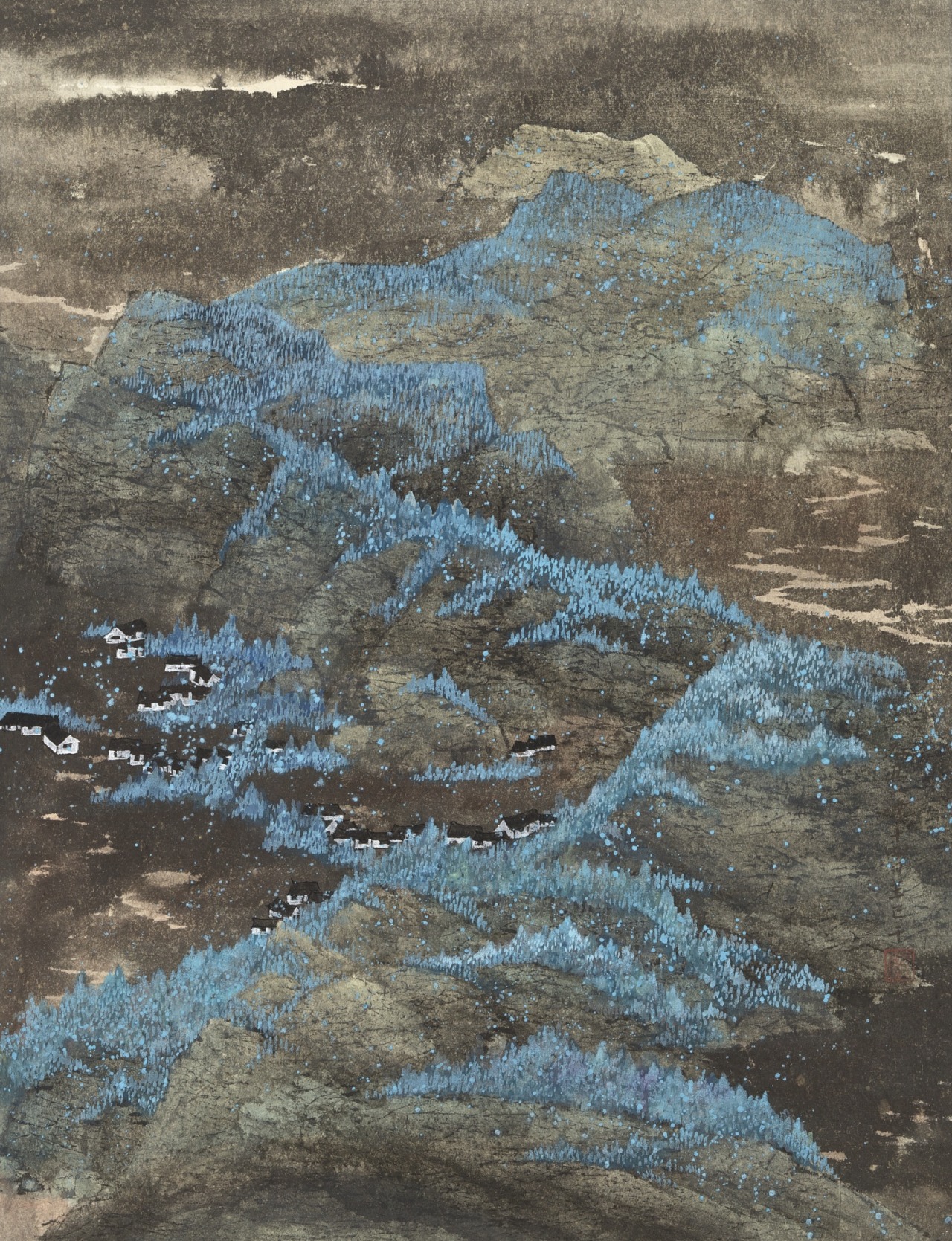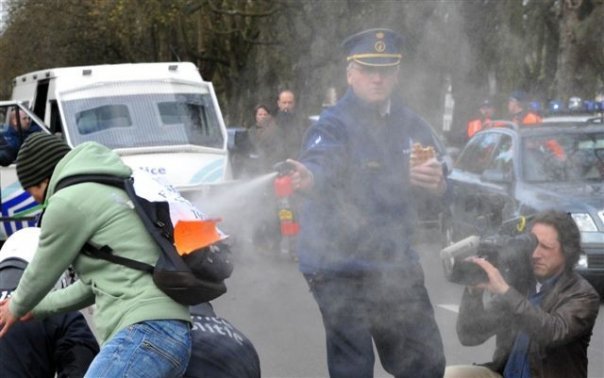Camera Restricta Project by Philipp Schmitt is a camera designed to take unique photographs - by using data of geotagged photos…



by garmonique (via http://flic.kr/p/6r6HWD )

by bisybackson (via http://flic.kr/p/wB9YAW )

l’Iris et l’Abreuvoir | in City and in Forest 1, 2015
mixed-media on wood, 48″ x 36″
There is something enigmatically utopian in this demand: as if it were the duty of Europe to realise their dreams – dreams which, incidentally, are out of reach of most Europeans (surely a good number of Southern and Eastern Europeans would prefer to live in Norway too?). It is precisely when people find themselves in poverty, distress and danger – when we’d expect them to settle for a minimum of safety and wellbeing – that their utopianism becomes most intransigent. But the hard truth to be faced by the refugees is that ‘there is no Norway,’ even in Norway.
http://www.lrb.co.uk/v37/n18/slavoj-zizek/the-non-existence-of-norway

20150823 (via http://flic.kr/p/yquFUP )

20150822 (via http://flic.kr/p/yqtuma )

20150821 (via http://flic.kr/p/y8Xw1x )

20150820 (via http://flic.kr/p/xtzSMZ )

_MG_1297-n3 by Vasilis Kouvalis (via http://flic.kr/p/y7xphi )

White Walker by Tavepong Pratoomwong (via http://flic.kr/p/ynZjJ3 )

shanghai3_b2 by tobias feltus (via http://flic.kr/p/aik4GA )





Urban Interaction Design: La convergencia de disciplinas hacia una nueva forma de hacer ciudad
*When do you find time to actually DO anything? Maybe you should just pass your days at a street side cafe table with your notebook open

Wang Jiqian (C. C. Wang) (Chinese, 1907-2003), Landscape No. 940, 1985. Ink and colour on paper, hanging scroll, 62.5 x 47.7 cm.
“This thou must always bear in mind, what is the nature of the whole, and what is my nature, and how this is related to that, and what kind of a part it is of what kind of a whole; and that there is no one who hinders thee from always doing and saying the things which are according to the nature of which thou art a part.”
–Marcus Aurelius, Meditations (Book Two.)
Cameron’s World is a web-collage of text and images excavated from the buried neighbourhoods of archived GeoCities pages (1994–2009). In an age where we interact primarily with branded and marketed web content, Cameron’s World is a tribute to the lost days of unrefined self-expression on the Internet. This project recalls the visual aesthetics from an era when it was expected that personal spaces would always be under construction.

Blue flamed molten sulphur - Kawah Ijen by Reuben Wu (via http://flic.kr/p/y69BCR )



“Catfish” demonstrates that online intimacy is about quantity, not quality. Back in 2007, Leisa Reichelt, the head of user research at Government Digital Services in the U.K., defined ambient intimacy as “being able to keep in touch with people with a level of regularity and intimacy that you wouldn’t usually have access to, because time and space conspire to make it impossible.”

by esomm (via https://instagram.com/p/7TgC7AG6Np/)

by the_effects_of_silent_noise_ (via https://instagram.com/p/7U_ghIDBSK/)
Rudimentary stepwells first appeared in India between the 2nd and 4th centuries A.D., born of necessity in a capricious climate zone bone-dry for much of the year followed by torrential monsoon rains for many weeks. It was essential to guarantee a year-round water-supply for drinking, bathing, irrigation and washing, particularly in the arid states of Gujarat (where they’re called vavs) and Rajasthan (where they’re baoli, baori, or bawdi) where the water table could be inconveniently buried ten-stories or more underground. Over the centuries, stepwell construction evolved so that by the 11th century they were astoundingly complex feats of engineering, architecture, and art.

variation on a theme of kilvey hill by Kenneth Rowe (via http://flic.kr/p/xJWGiM )

Generic wins out every time.





20150819 (via http://flic.kr/p/xZLGg1 )

20150818 (via http://flic.kr/p/xkmn83 )

20150817 (via http://flic.kr/p/yhnMfR )

20150816 (via http://flic.kr/p/xkjZiJ )

20150815 (via http://flic.kr/p/xkjV39 )

“If we imagine a worm that crawls around the periphery of the forest, seeing a ‘(’ whenever it passes the left edge of a node and a ‘)’ whenever it passes a node’s right edge, that worm will have reconstructed the original string“

(via http://flic.kr/p/yfNaKF )

(via http://flic.kr/p/ycMFWs )

Searching for the Zenne (via http://flic.kr/p/xi5HMy )

(via http://flic.kr/p/xXuZr7 )

(via http://flic.kr/p/ycMBB5 )

(via http://flic.kr/p/yf76R2 )

(via http://flic.kr/p/yecrPG )

(via http://flic.kr/p/ycMyff )

Sprinkling Tarn by Mark Rowell (via http://flic.kr/p/xXxkH6 )

My mother sent me this today: a digital print of her (outdated) single engine pilot’s licence. I can’t help but keep staring at it. So humbling. ❤️ by fanabulous (via https://instagram.com/p/7PnCinx3HjvVpUWwJiUZw5E-17fJxbjRUwkIY0/)

by changeist (via https://instagram.com/p/7P67KvvnaaUPKPlnobNaHDNIMlxoHZtXxmFhA0/)

by strctrnrrtv (via https://instagram.com/p/7P9GkgD0La/)

J.D Doria. Reconstructing the Horizon.. Again (manifest 1), from the Material Cosmologies Series, July 2015

The Petri Dish Project - the Calligraphy Series, by J.D Doria, 2014

The Petri Dish Project - the Calligraphy Series, by J.D Doria, 2014

The Petri Dish Project - the Calligraphy Series, by J.D Doria, 2014
This one-shot poison (which is harmless to everything else on the reef) is what makes autonomous robotic sea star control possible, since it means that a robot can efficiently target individual sea stars without having to try and keep track of which ones it’s injected already so it can go back and repeat the process nine more times. At Queensland University of Technology in Australia, a group of researchers led by Matthew Dunbabin and Peter Corke spent the last decade working on COTSBot,* which has been specifically designed to seek out and murder crown-of-thorns sea stars as mercilessly and efficiently as possible.
http://spectrum.ieee.org/automaton/robotics/industrial-robots/poison-robot-submarine

The cyborg sensorium is possible because, as it turns out, the human brain is quite happy to accept whole new forms of peripherals. Neuroplasticity, we now know, is the natural state of the brain; we’ve only just developed the technology to properly take advantage of it. It’s like we were always meant to merge completely with the machine world. To fuse into a new kind of organism.
It Me


the tree & me, digital photograph, 2009, by Herbert Weber


Australian desert by europeanspaceagency (via http://flic.kr/p/ya7upj )

Searching for the Zenne (via http://flic.kr/p/xfW6nr )

640_0032.jpg (via http://flic.kr/p/xVcagC )

640_0034.jpg (via http://flic.kr/p/ybVd3N )


X by kab101ism (via https://instagram.com/p/g9dbSvBcM1/)

by craigmasika (via https://instagram.com/p/6Ksc3HKIS8/)

X by kab101ism (via https://instagram.com/p/7ITsKnBcFX/)

A Buddhist monk locks the door to a private area of the Chojin Lama Temple. The temple was spared destruction and converted to a museum during the Stalinist era. Unfortunately, most other monasteries did not share the same fate and were destroyed. Tibetan Buddhism is the most common religion in Mongolia, although originally, Mongols practiced Shamanism in which they worshipped the blue sky. - Observations from 2009 along the Trans-Mongolian Railway by misterzvereff (via https://instagram.com/p/7ImHltIjbs/)

Fractal - Dendrus Dawn Scatter by Allan1952 (via http://flic.kr/p/wcdhYx )

_1157765.jpg by 林官賢 (via http://flic.kr/p/w4o4zd )

_1157690.jpg by 林官賢 (via http://flic.kr/p/wJxYJH )

cement_blocks by Claudio Castelli (kurageart) (via http://flic.kr/p/y4crpn )

Angkor Thom by Luzdal (via http://flic.kr/p/xM9uMM )

by Alexandru Paraschiv (via http://flic.kr/p/x1N9RR )

Metropolis by Claudio Castelli (kurageart) (via http://flic.kr/p/wuqJdp )

18 by spiros zervoudakis (via http://flic.kr/p/cgBNXA )

by Luzdal (via http://flic.kr/p/oP7kFP )

Metropolis by Claudio Castelli (kurageart) (via http://flic.kr/p/x9FnpQ )

museum, maybe by Claudio Castelli (kurageart) (via http://flic.kr/p/wJok8n )

_R157807.jpg by 林官賢 (via http://flic.kr/p/wbdFPj )

_R006200.jpg by 林官賢 (via http://flic.kr/p/smLw6B )

The Prehendo, Dendrus and the Boundary Birds by Allan1952 (via http://flic.kr/p/weaRM3 )

by nim is a tree (jean-françois flamey) (via http://flic.kr/p/xuZVBK )

interference by Ivan Bachev (via http://flic.kr/p/f8dEks )

Iterated Function System by Quasimondo (via http://flic.kr/p/rQZ9jx )

BMCRP_VM_Bx93_WoelfferD_ClassesFuller_39bb–Sum1949-HYoung-YsiMartinez by State Archives of North Carolina (via http://flic.kr/p/aUVp8i )

Structure by Syntopia (via http://flic.kr/p/tSpXuw )

Structure by Syntopia (via http://flic.kr/p/tSpYn3 )

☾ by EmilyJHansell (via http://flic.kr/p/y8UHkK )

20150814 (via http://flic.kr/p/xaFLTG )

20150813 (via http://flic.kr/p/y6Pshm )

20150812 (via http://flic.kr/p/y5owCW )

20150811 (via http://flic.kr/p/y7GMd8 )

20150810 (via http://flic.kr/p/y8o1bR )

20150809 (via http://flic.kr/p/xQ5K5y )

20150808 (via http://flic.kr/p/xQ5Hby )

20150807 (via http://flic.kr/p/y5ojZ5 )

20150806 (via http://flic.kr/p/xaFrwf )
